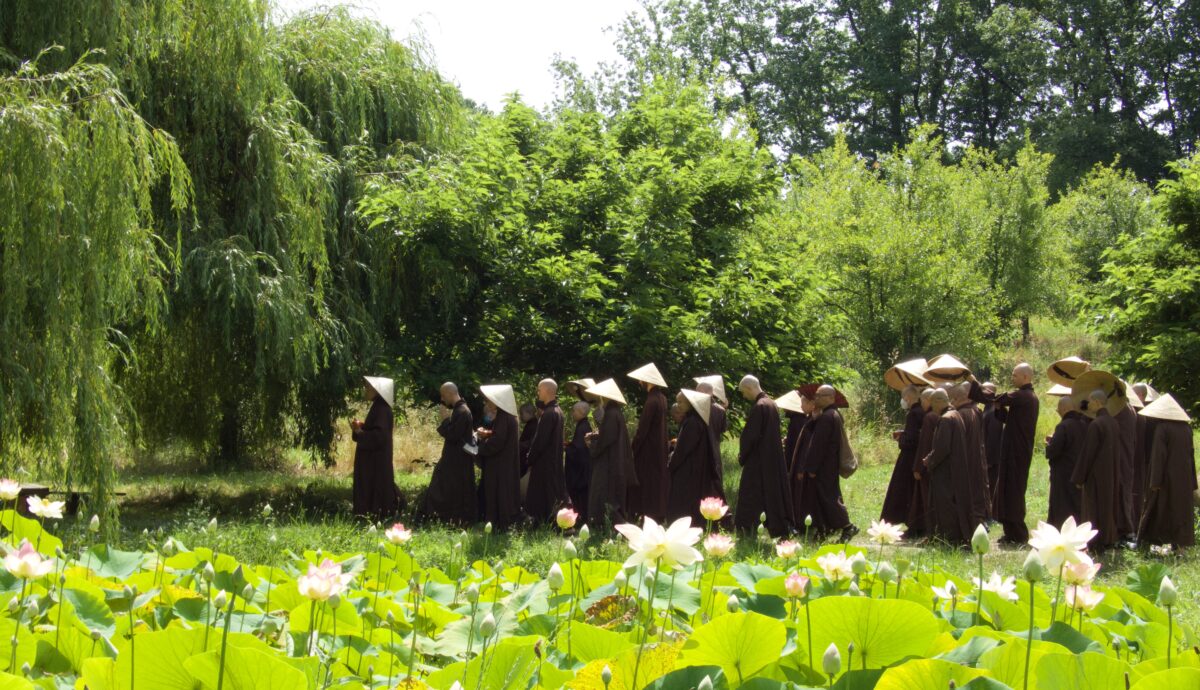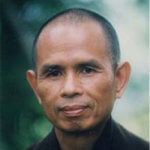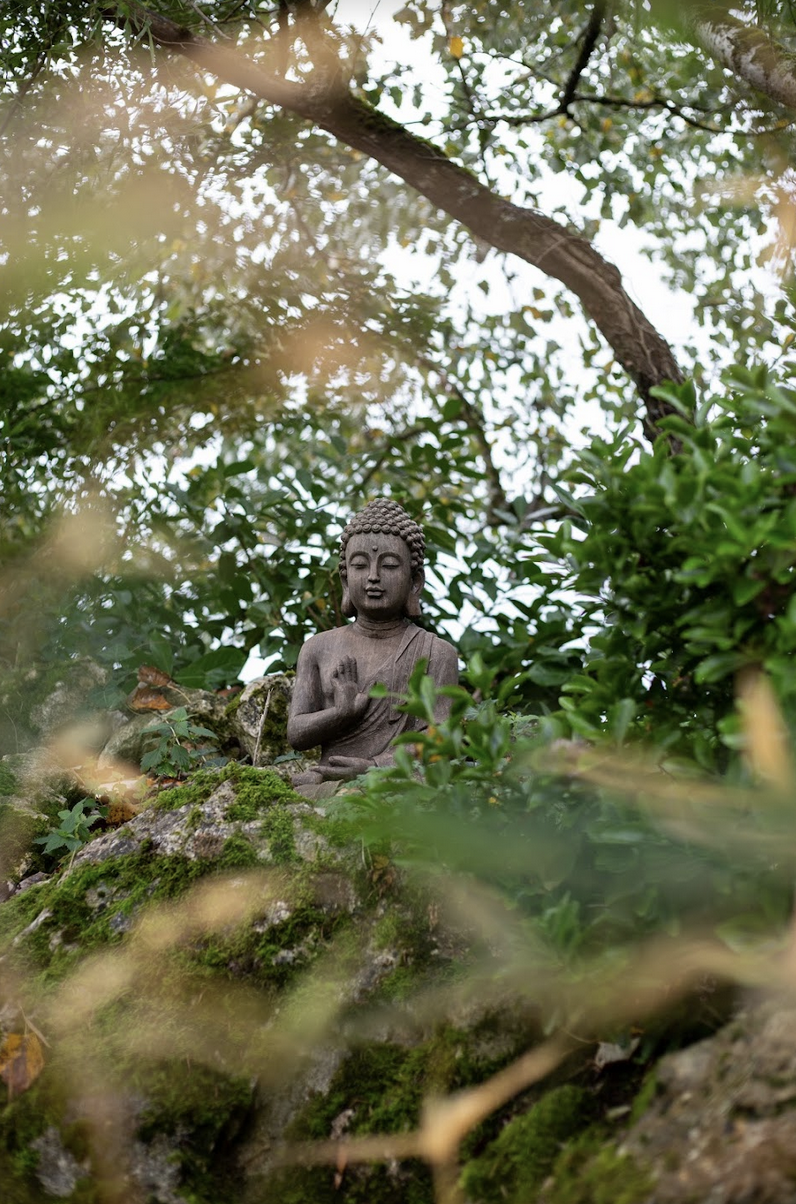By Thich Nhat Hanh on
Suffering and happiness are not separate
When we suffer, we tend to think that suffering is all there is at that moment, and happiness belongs to some other time or place. People often ask, “Why do I have to suffer?” Thinking we should be able to have a life without any suffering is as deluded as thinking we should be able to have a left side without a right side.
By Thich Nhat Hanh on
Suffering and happiness are not separate
When we suffer, we tend to think that suffering is all there is at that moment, and happiness belongs to some other time or place. People often ask, “Why do I have to suffer?” Thinking we should be able to have a life without any suffering is as deluded as thinking we should be able to have a left side without a right side. The same is true of thinking we have a life in which no happiness whatsoever is to be found. If the left says, “Right, you have to go away. I don’t want you. I only want the left”—that’s nonsense, because then the left would have to stop existing as well. If there’s no right, then there’s no left. Where there is no suffering, there can be no happiness either, and vice versa.
If we can learn to see and skillfully engage with both the presence of happiness and the presence of suffering, we will go in the direction of enjoying life more. Every day we go a little farther in that direction, and eventually we realize that suffering and happiness are not two separate things.
Some say that suffering is only an illusion or that to live wisely we have to “transcend” both suffering and joy. I say the opposite.
Cold air can be painful if you aren’t wearing enough warm clothes. But when you’re feeling overheated or you’re walking outside with proper clothing, the bracing sensation of cold air can be a source of feeling joy and aliveness. Suffering isn’t some kind of external, objective source of oppression and pain. There might be things that cause you to suffer, such as loud music or bright lights, which may bring other people joy. There are things that bring you joy that annoy other people. The rainy day that ruins your plans for a picnic is a boon for the farmer whose field is parched.
Happiness is possible right now, today—but happiness cannot be without suffering. Some people think that in order to be happy they must avoid all suffering, and so they are constantly vigilant, constantly worrying. They end up sacrificing all their spontaneity, freedom, and joy. This isn’t correct. If you can recognize and accept your pain without running away from it, you will discover that although pain is there, joy can also be there at the same time.
Some say that suffering is only an illusion or that to live wisely we have to “transcend” both suffering and joy. I say the opposite. The way to suffer well and be happy is to stay in touch with what is actually going on; in doing so, you will gain liberating insights into the true nature of suffering and of joy.

No mud, no lotus
Both suffering and happiness are of an organic nature, which means they are both transitory; they are always changing. The flower, when it wilts, becomes the compost. The compost can help grow a flower again. Happiness is also organic and impermanent by nature. It can become suffering, and suffering can become happiness again.
If you look deeply into a flower, you see that a flower is made only of non-flower elements. In that flower there is a cloud. Of course we know a cloud isn’t a flower, but without a cloud, a flower can’t be. If there’s no cloud, there’s no rain, and no flower can grow. You don’t have to be a dreamer to see a cloud floating in a flower. It’s really there. Sunlight is also there. Sunlight isn’t flower, but without sunlight no flower is possible.
If we continue to look deeply into the flower, we see many other things, like the earth and the minerals. Without them a flower cannot be. So it’s a fact that a flower is made only of non-flower elements. A flower can’t be by herself alone. A flower can only inter-be with everything else. You can’t remove the sunlight, the soil, or the cloud from the flower.
In each of our Plum Village practice centers around the world, we have a lotus pond. Everyone knows we need to have mud for lotuses to grow. The mud doesn’t smell so good, but the lotus flower smells very good. If you don’t have mud, the lotus won’t manifest. You can’t grow lotus flowers on marble. Without mud, there can be no lotus.
It is possible of course to get stuck in the “mud” of life. It’s easy enough to notice mud all over you at times. The hardest thing to practice is not allowing yourself to be overwhelmed by despair. When you’re overwhelmed by despair, all you can see is suffering everywhere you look. You feel as if the worst thing is happening to you. But we must remember that suffering is a kind of mud that we need in order to generate joy and happiness. Without suffering, there’s no happiness. So we shouldn’t discriminate against the mud. We have to learn how to embrace and cradle our own suffering and the suffering of the world, with a lot of tenderness.
When I lived in Vietnam during the war, it was difficult to see our way through that dark and heavy mud. It seemed like the destruction would just go on and on forever. Every day people would ask me if I thought the war would end soon. It was very difficult to answer, because there was no end in sight. But I knew if I said, “I don’t know,” that would only water their seeds of despair. So when people asked me that question, I replied, “Everything is impermanent, even war. It will end some day.” Knowing that, we could continue to work for peace. And indeed the war did end. Now the former mortal enemies are busily trading and touring back and forth, and people throughout the world enjoy practicing our tradition’s teachings on mindfulness and peace.
If you know how to make good use of the mud, you can grow beautiful lotuses. If you know how to make good use of suffering, you can produce happiness. We do need some suffering to make happiness possible. And most of us have enough suffering inside and around us to be able to do that. We don’t have to create more.

Being present with strong emotions
When a painful emotion comes up, stop whatever you’re doing and take care of it. Pay attention to what is happening. The practice is simple. Lie down, put your hand on your belly, and begin to breathe. Or you may sit on a cushion or on a chair. Stop thinking, and bring your mind down to the level of the navel.
When you look at a tree in a storm, if you focus your attention on the top of the tree, you’ll see the leaves and branches blowing wildly in the wind, and the tree will look so vulnerable, as though it could be broken at any time. But when you direct your attention down to the trunk of the tree, there’s not so much movement. You see the stability of the tree, and you see that the tree is deeply rooted in the soil and can withstand the storm. When we experience a strong emotion, the mind is agitated like the top of the tree. We have to bring our mind down to the trunk, to the abdomen, and focus all our attention on the rise and fall of the abdomen.
Breathing in, you notice the rising of your abdomen. Breathing out, notice the falling of your abdomen. Breathe deeply and focus your attention only on your in-breath and out-breath. If there is anything to be aware of, it’s that an emotion is only an emotion, and that you are much more than one emotion. You are body, feelings, perceptions, mental formations, and consciousness. The territory of your being is large. One emotion is very little. An emotion is something that comes and stays for a while and eventually goes away. If during the time of the emotion, you have that insight, that insight will save you. You don’t have to die just because of one emotion.
We shouldn’t wait until the strong emotion comes to begin learning. That may be too late; the emotion may carry you away. But you can learn now. Then, if the day after tomorrow you have a strong emotion, you’ll have confidence that you can handle the strong emotion.
From No Mud, No Lotus by Thích Nhất Hạnh, published by Parallax Press.


